
Pro Electricians Don’t Take Chances at Work or at Home
Whenever you ever flip a light switch, plug in a toaster or charge a smart phone, you are handling electricity. And while these tasks are simple and not risky, the reality is, your home’s electrical system is complex and potentially dangerous, says Christopher Haas, owner of Haas & Sons Electric in Maryland.
Electrocution, Haas says, occurs more frequently with 120 volts of electricity—the standard in a home—than any other level of voltage. “And, unfortunately [home electrocution] claims lives every single year,” he says. “So, don’t think of it as ‘just’ 120 volts—think of it as something that could permanently injure you.”
How can you keep yourself safe while also keeping your lights, outlets and appliances in good working order? Start by following the same set of upkeep guidelines and best practices that pro electricians follow.

Pro Electricians Use the Correct Lightbulbs
When the bulb in your favourite lamp or fixture burns out, do you just run to the store and grab the first replacement bulb you see, or do you make sure you are purchasing the correct bulb? If the grab-and-go option is your standard operating procedure, it’s time to rethink the process.
“Make sure you put the correct wattage bulb into the fixture,” says Jake McKusker, general manager of McKusker Electric in Mead, Colorado.
Why is this important? Because if you use a 100-watt bulb in a fixture designed for 40-watts of power, McKusker says you will essentially “cook” the fixture. This will degrade the wires and create a fire hazard, he says. The extra light output is not worth the risk! Likewise, low wattage is likely to leave you sitting in a dark room.
How do you determine how many watts you need? Look on your lamp or fixture. You should see a small sticker or printed text telling you how many watts are required. Then find a lightbulb that matches.
Find out nine things you should never do with power bars.
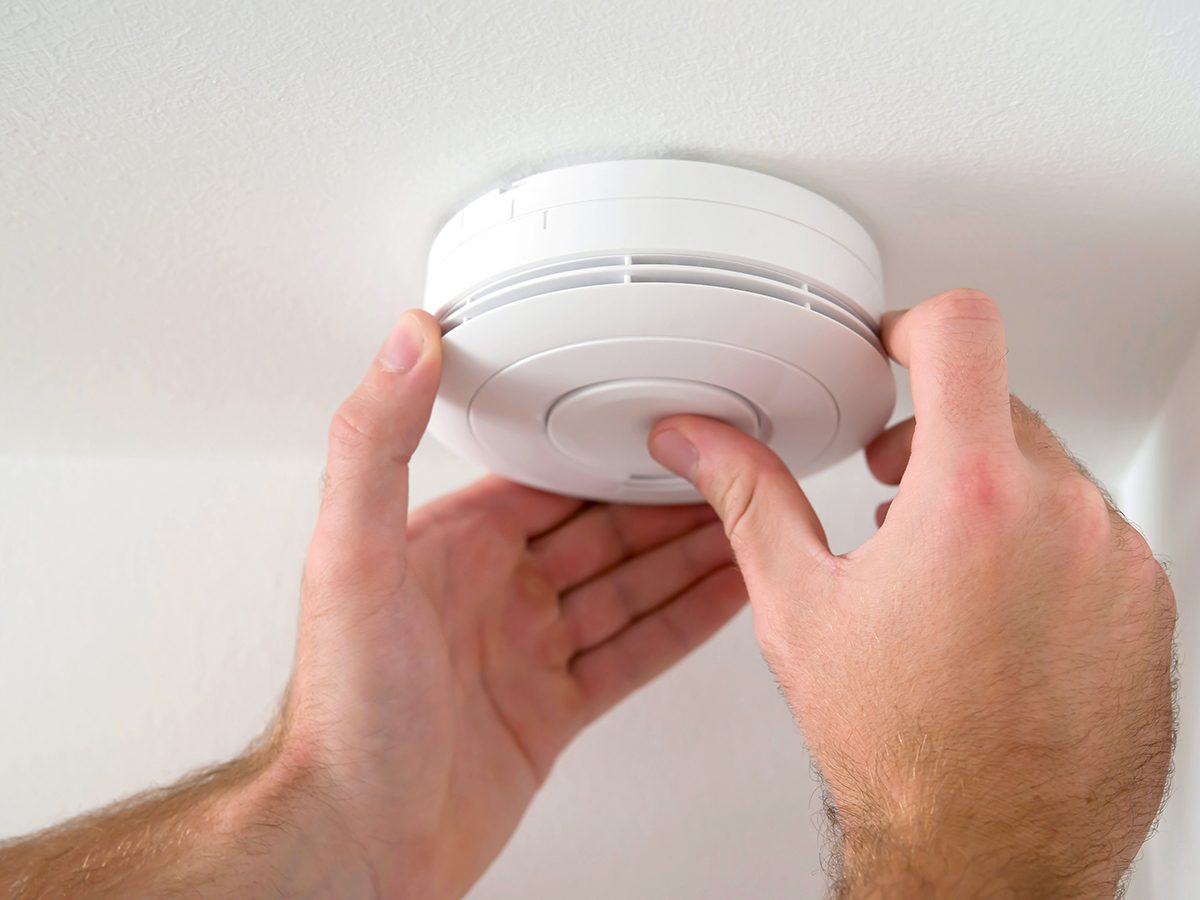
They Check Carbon Monoxide and Smoke Detectors Regularly
You’re probably aware you’re supposed to check the batteries in your smoke and carbon monoxide detectors regularly. But are you actually following these safety guidelines from Health Canada?
“Most people don’t test them until they start chirping,” says McKusker.
Electricians, however, are really good about keeping up with this task, because they know the stakes are high if they put it off. Namely, you might sleep through a fire or fail to recognize a carbon monoxide leak. The rules, which apply to all smoke and CO detectors (even those that are hard-wired into your home’s electrical system) are straightforward:
- Check your smoke detector and CO detector batteries once a month;
- Replace the batteries once a year, even if they still seem to be working;
- Replace the entire unit every 10 years because the devices are only designed to last a decade.
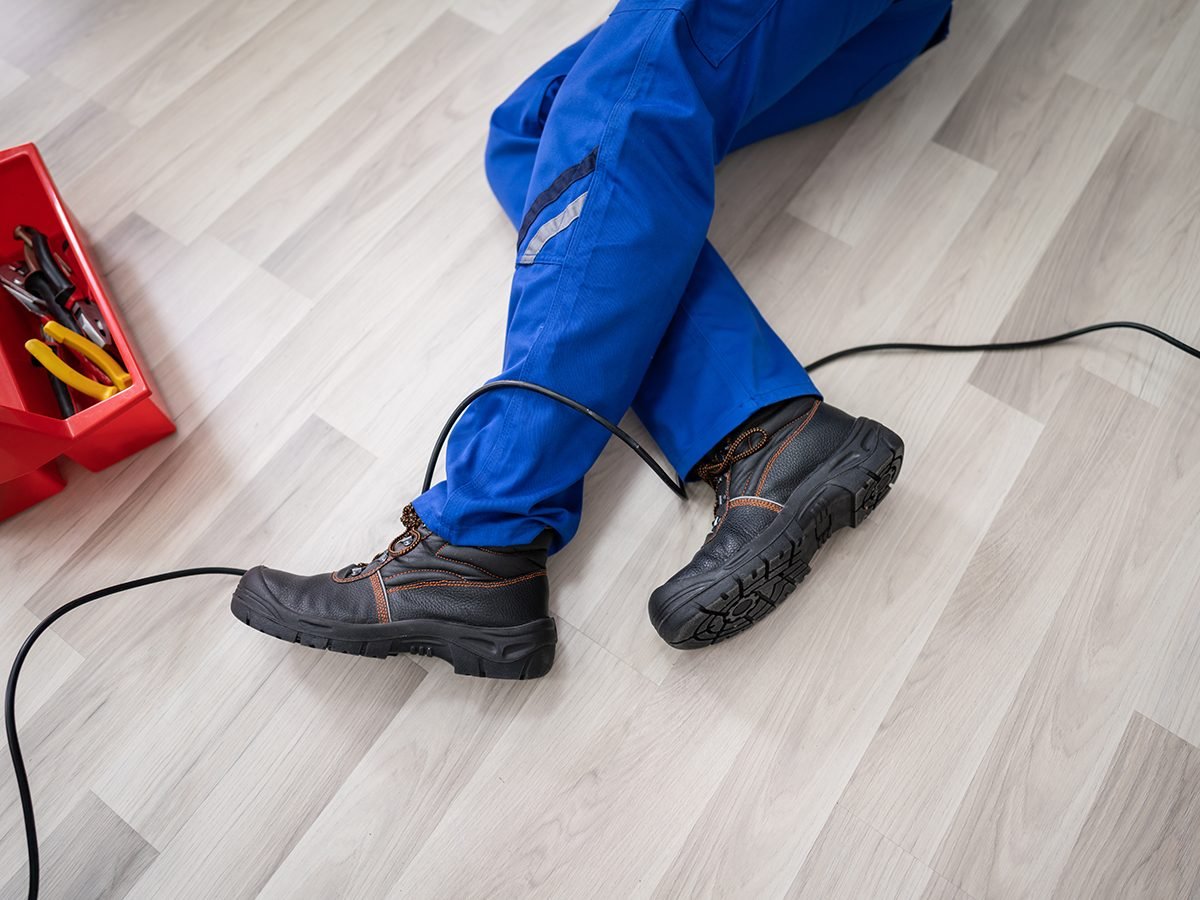
They Always Wear Shoes With Rubber Soles When Working With Electricity
Wait, so I shouldn’t wear flip flops while accessing my circuit breaker or installing a new electrical outlet? Absolutely not, warns McKusker. If you inadvertently step in water, or slip and come into contact with a live wire, it’s possible you’ll experience electrical shock. To stay safe, electricians wear closed-toe shoes with rubber soles, whether on the job site or doing electrical upgrades at home.
“A thick rubber sole will help insulate you from grounding out,” McKusker says. Wearing protective gloves and other safety gear is a good idea too, he says.
Don’t worry—this doesn’t mean you have to go out and buy a special pair of shoes for that once-in-a-blue-moon home electrical repair. Just be smart about the shoes you put on your feet.
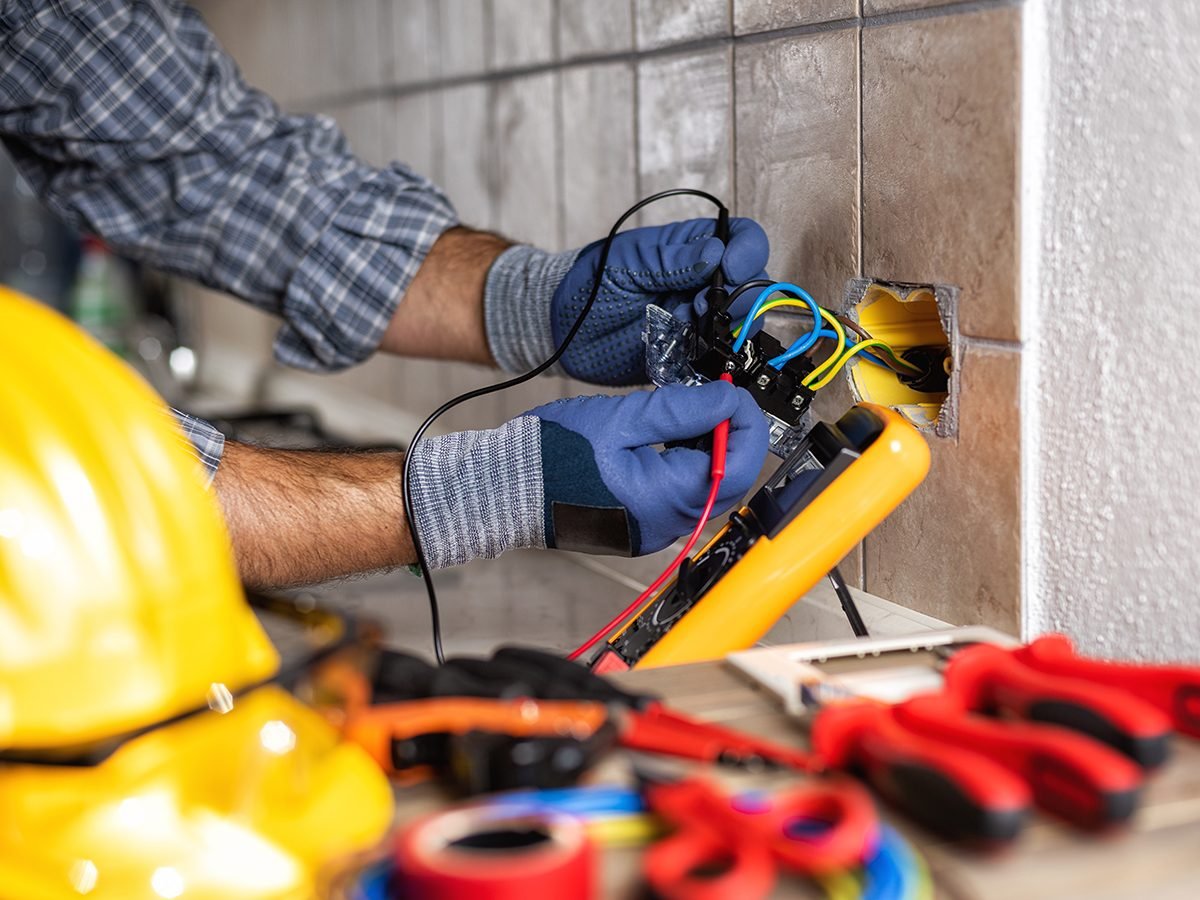
They Always Use Voltage Testers With Displays
Naturally, professional electricians always check the voltage before they start working with the wires—and so should you! But they don’t use any old voltage tester. “I personally recommend (that) people always use a tester with a display, whether it be digital or analog,” McKuster says.
This, he says, is a better choice than pin-style testers that only indicate the presence of voltage without giving specifics. If the voltage is low, a pin-style tester might not “read” it—but you could still get shocked.
Digital and analog voltage testers with displays will let you know exactly how many volts of electricity are running through wires so you’ll know whether it is safe to proceed. If it turns out your wire is “live,” you can stop, troubleshoot and avoid electrical shock.
Here’s exactly what to do in a power outage.
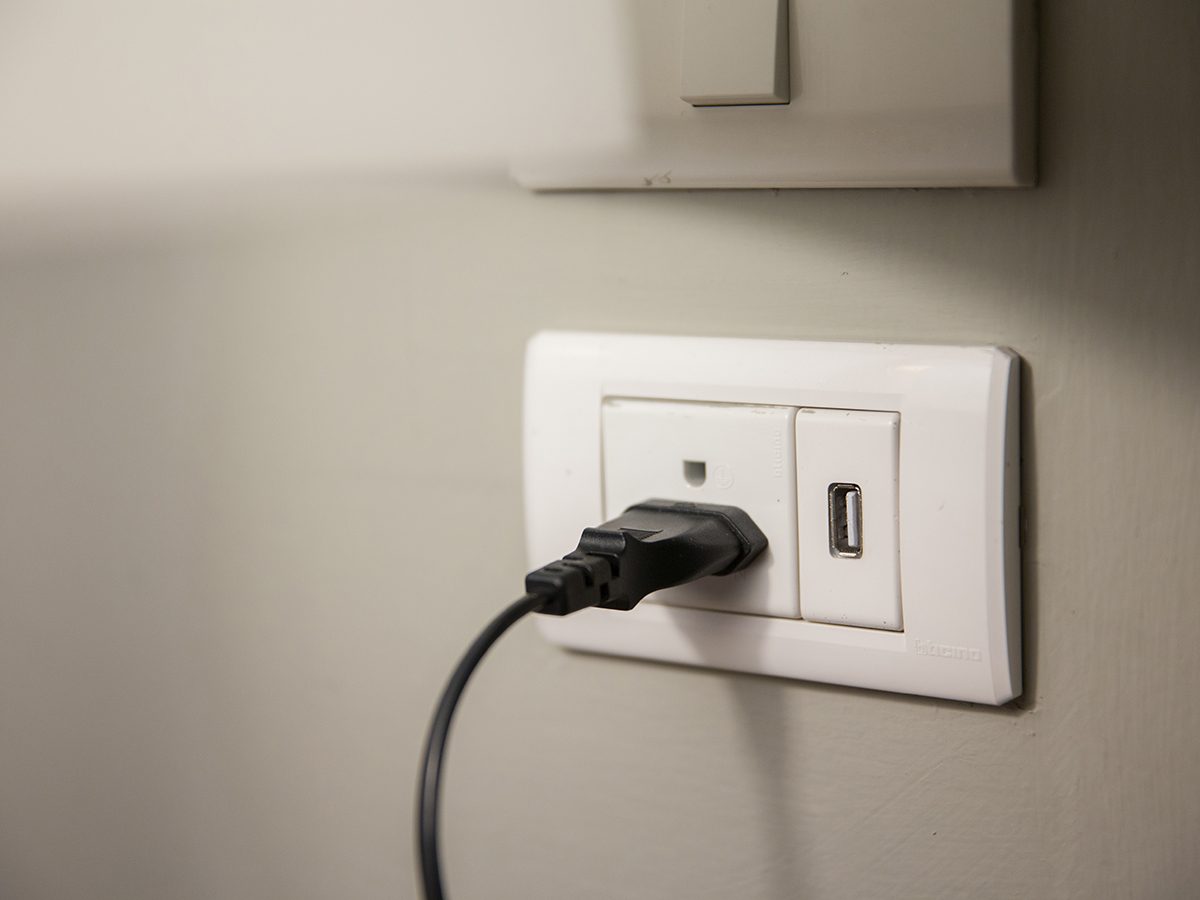
They Use Outlets With Internal USB Ports
If you’re like us, you probably have USB power adapters to charge your phone, tablet and other devices cluttering up the electrical outlets all over your house. Not only do these adapters take up valuable outlet space, they also tend to disappear right when you need to charge something.
Electricians know the secret to avoiding the hassle—they install electrical outlets with the USB ports built right in. This means you don’t have to choose between charging your device and turning on a lamp, and you won’t have to hope that you can actually find an adapter when you need one.
“All you have to have is the cord to plug it in,” says McKusker.
Find out the surprising ways you’re shortening the life of your phone.
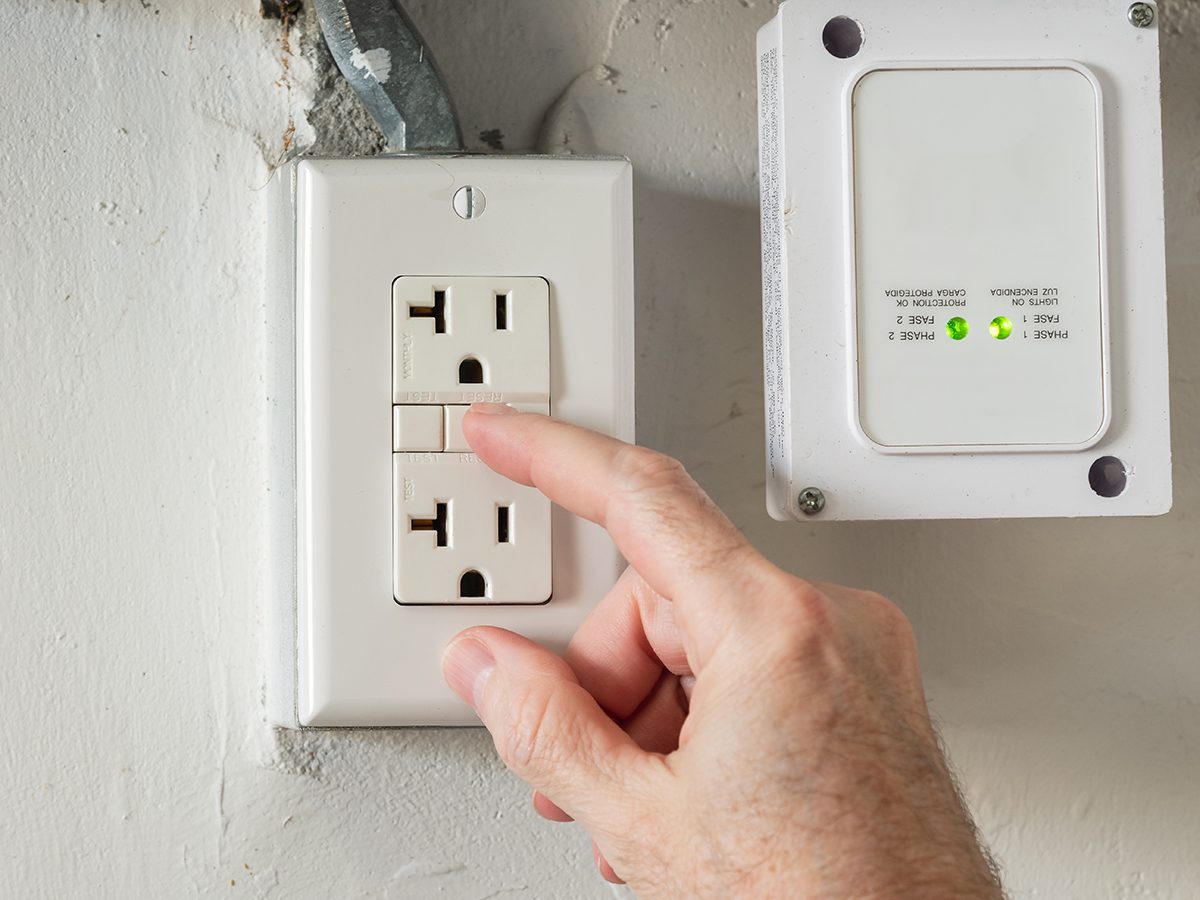
They Test Their GFCIs Monthly
You probably already know electricians always use ground-fault circuit-interrupter (GFCI) outlets outdoors and in specific indoor areas of the home, such as bathrooms, kitchens, laundry rooms and crawlspaces. But did you know that installing the GFCI is just the beginning?
GFCIs need to be tested regularly to be sure they function properly, says McKusker. He advises testing them once a month or on the manufacturer’s schedule. How do you conduct the test? In most cases, you simply press the “test” button on the outlet. The basic instructions are:
- Plug an appliance into the outlet. A hair dryer works well for testing, but you can use a lamp if you prefer.
- Turn on the appliance and press the (usually red) test button.
- If the GFCI is working properly, the appliance will “trip”—meaning electricity will stop flowing to the appliance and the test button will pop out.
- “If it trips, it is working correctly,” McKuster says. “If it doesn’t trip, that is a big indicator that you (shouldn’t) use it,” McKusker says a GFCI that doesn’t trip needs to be replaced immediately.
- What if you have a new GFCI that keeps tripping? In this case, the device you are plugging into it could be the culprit. Try another appliance to be sure, then replace that faulty hair dryer, lamp or toaster.
Find out why you should always turn off the bathroom fan before leaving on a vacation.

They Automate as Much as Possible
Electricians know that devices like programmable thermostats, lighting timers/motion sensors and electronic door-locking systems (including those that are smart/WiFi enabled) offer much more than convenience. They also offer a sense of security and save money and energy.
How? With a programmable thermostat, you can potentially reduce annual heating costs by up to 10 per cent, according to Quebec Hydro. (Here are more ways to slash your winter heating bills.)
Lights with timers and motion sensors allow you to make sure lights are not left on unnecessarily. McKusker says he sometimes installs motion sensor lights in kids’ rooms, because kids are notorious for leaving lights on. That’s bound to help with your monthly electricity usage.
Motion sensors and timed lighting also offer a sense of security. You’ll know your outdoor lighting will come on, for example, if someone is creeping around in your yard late at night. Automatic/smart door locks let you unlock your front door from your driveway, and some can even monitor the arrival and departure of family members.
“Once people utilize this type of technology, they generally don’t go back,” says Dan Mock, brand manager for Mister Sparky, a national electrical services franchise.
Don’t miss these pro tips on how to outsmart a burglar.
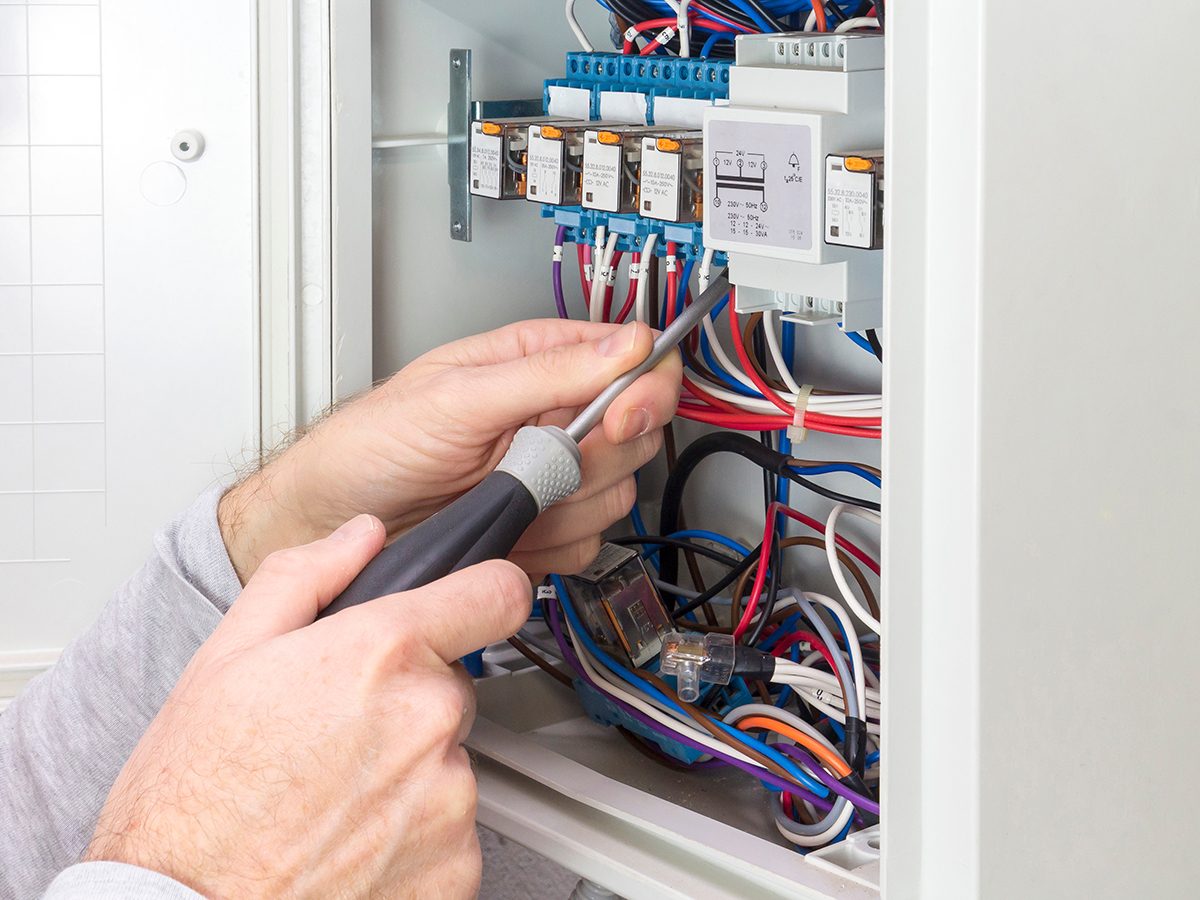
They Maintain Their Electrical Panel
If you have stacks of boxes, shelving or random incidentals stacked in front your electrical panel (also known as a circuit breaker or breaker box), it might be time to consider what an electrician would do clear the area. Otherwise, you’re creating an unnecessary hassle and a fire hazard. (These home organization hacks can help you declutter.)
“Your electrical panel should be clean and accessible,” says Mock. Blocking access to the panel, he says, makes it more difficult if you or the fire department needs to access the panel quickly.
Furthermore, it’s vital to make sure all the switches on your electrical panel are properly labelled and kept “on,” Mock says. If you’re unsure about the labels, consider calling an electrician to help sort it out.
And definitely don’t ignore an electrical panel that is constantly tripping. That’s a sign of a short circuit or some other problem that needs to be addressed immediately.

Pro Electricians Respect Electricity
Finally, and most importantly, electricians understand that electricity is powerful, so they treat it with respect. This means following code and safety guidelines at all times, Haas says, and understanding that shortcuts are never an option. Shortcuts, he says, can quickly lead to injury.
As a homeowner, you can respect electricity by checking and double checking to make sure the power is off before you start working with your electrical system. And don’t even attempt electrical projects unless you are 100 per cent confident in your knowledge and skills. If there’s any doubt, call a pro.
“It is better to be safe than sorry,” Haas says.
Next, eliminate potential hazards in every room with our healthy home checklist.